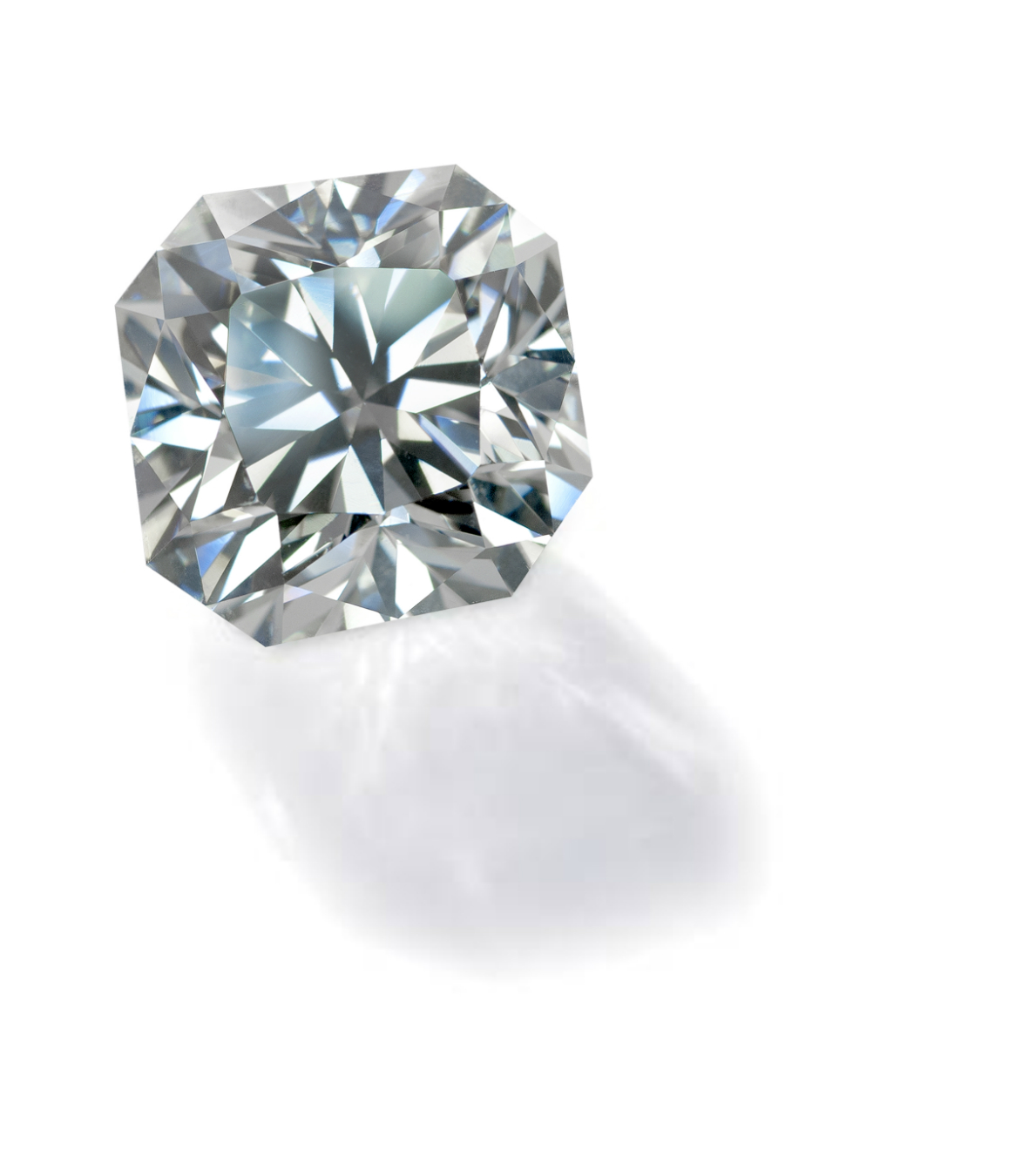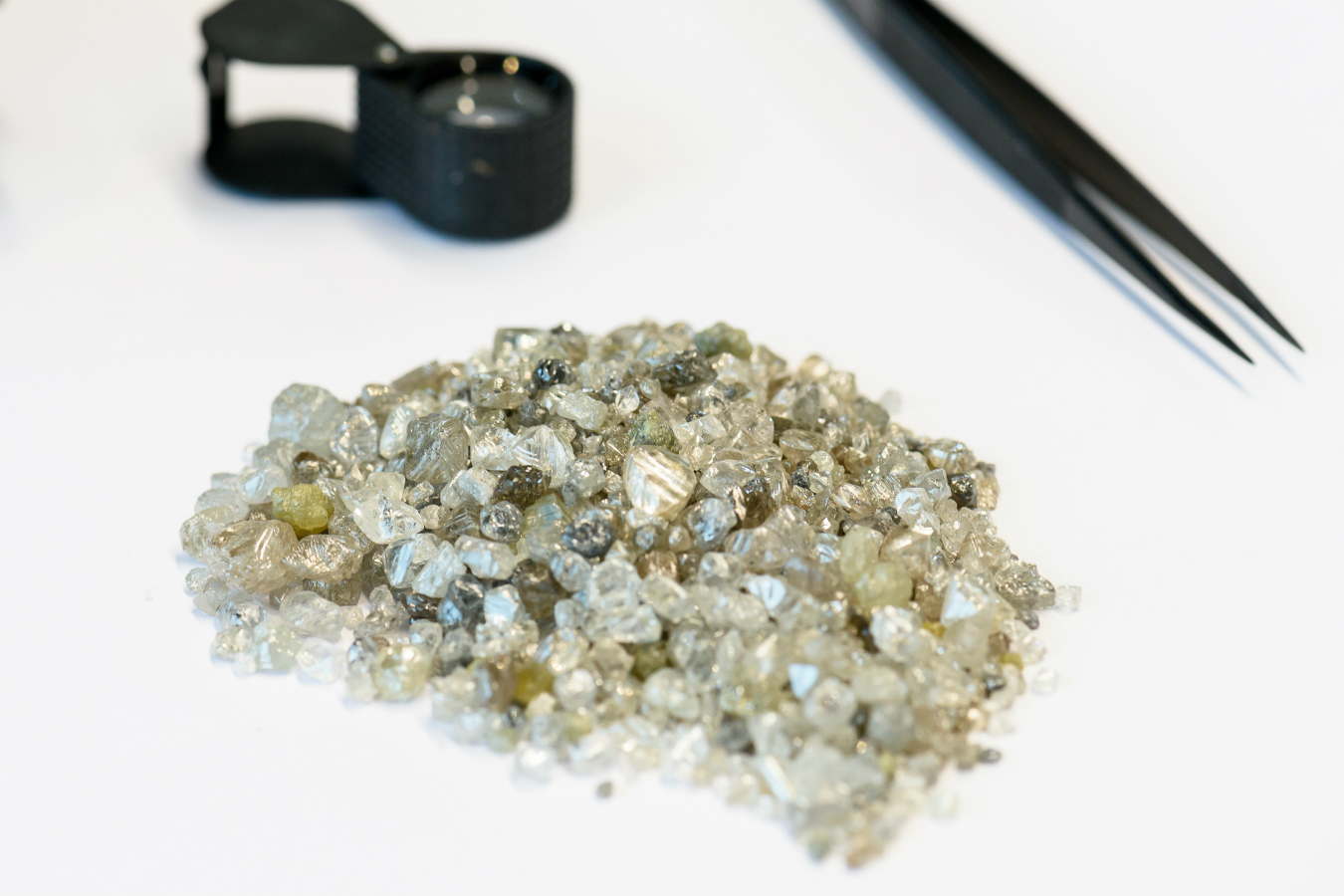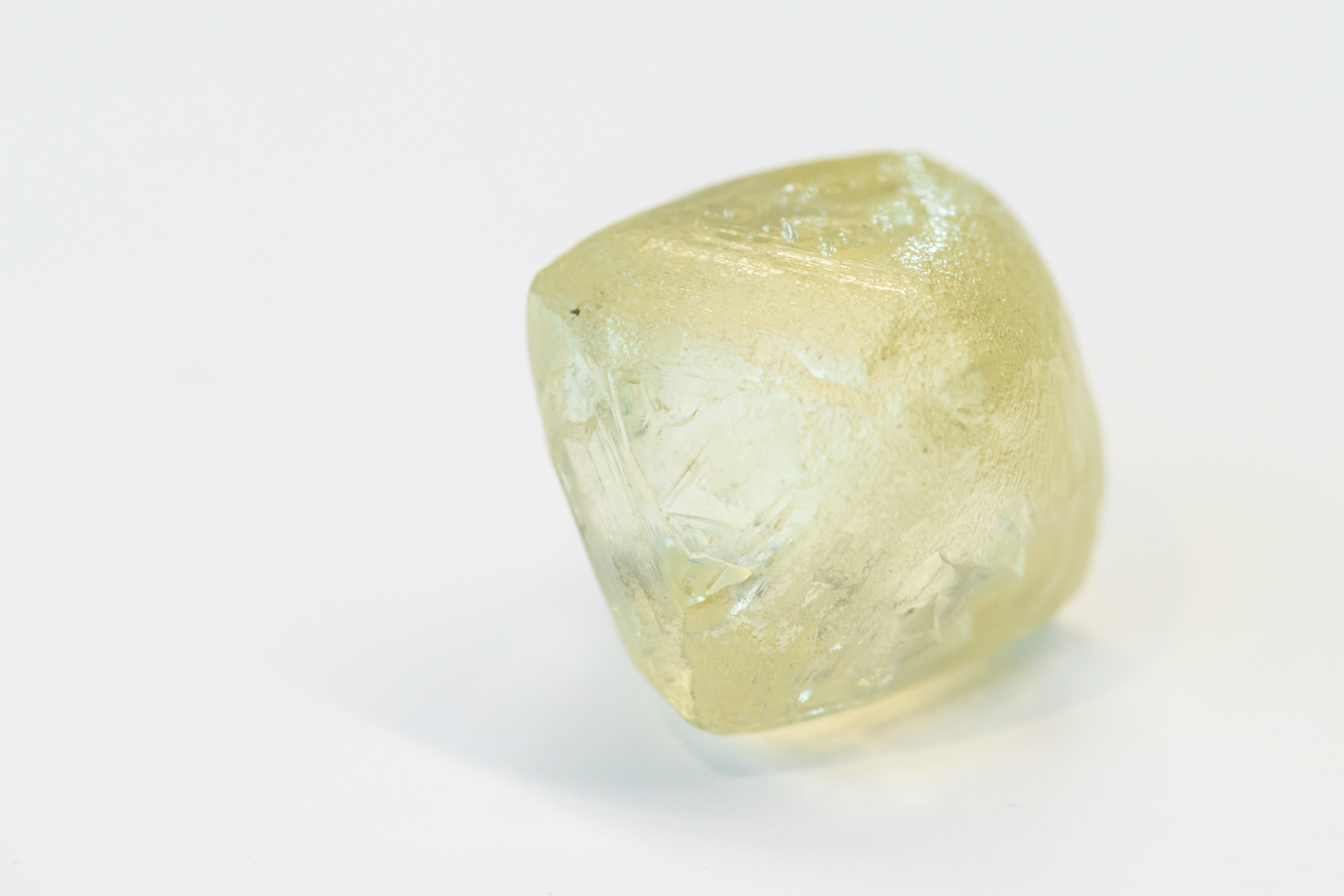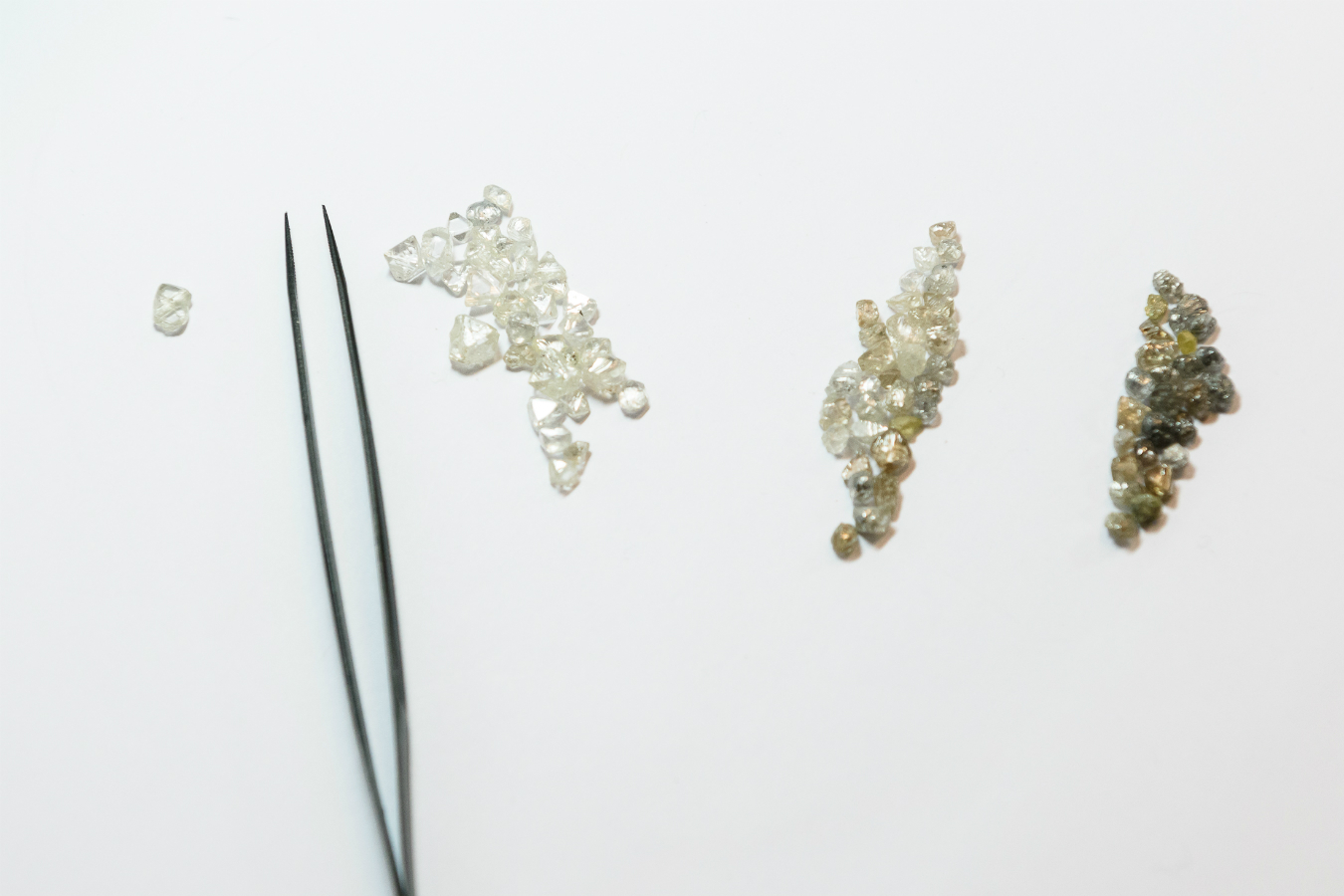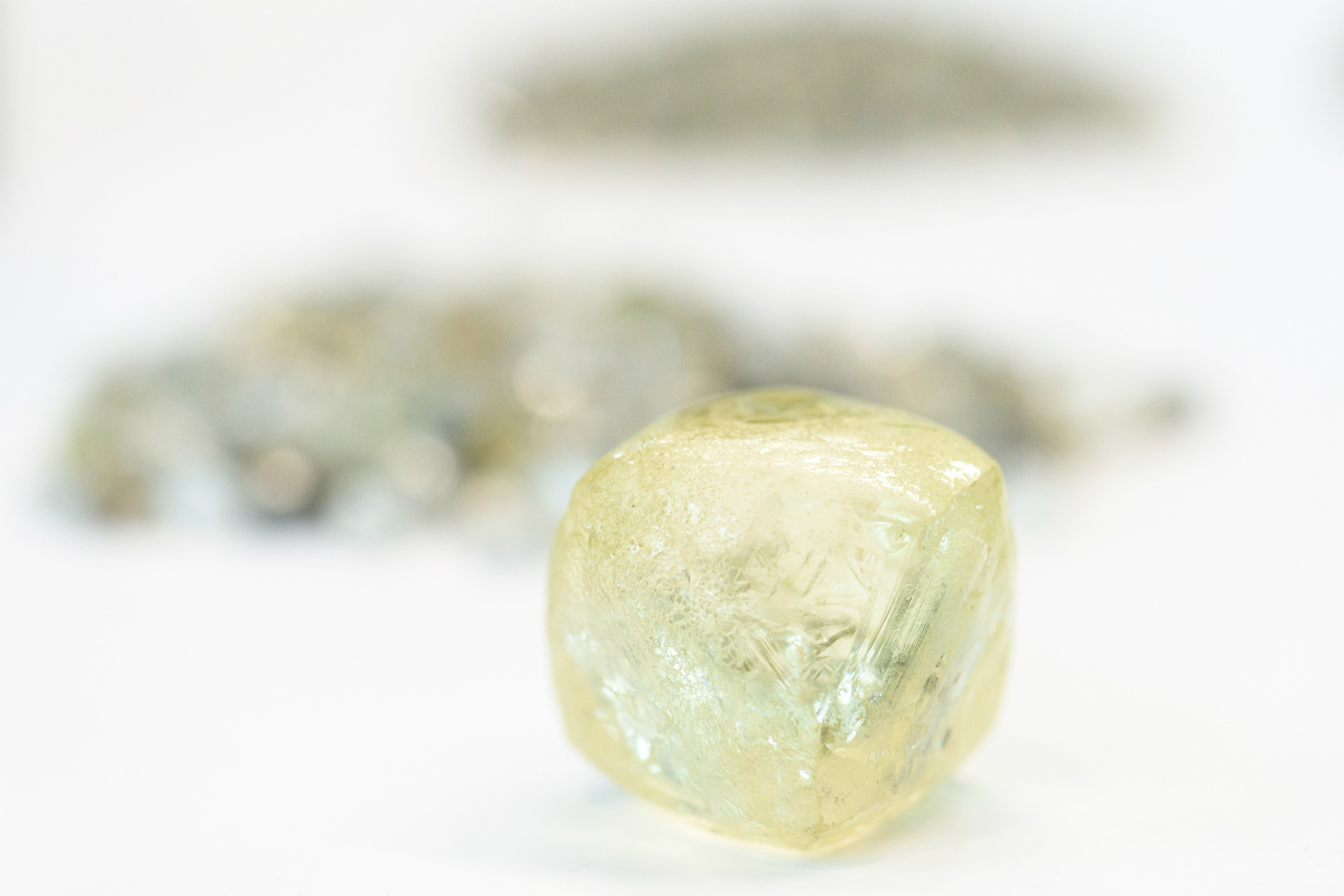Charles Stanley is giving a brief, fairly concise history of diamonds. They were made, pure carbon in crystallized form, over a billion years ago, when the earth itself was formed, but it took millions upon millions of years for volcanic activity to thrust them near the surface. Diamonds were discovered first in India, and perhaps most abundantly and famously at Kimberley, South Africa, where Cecil Rhodes (his name is also attached to the famous Oxford University scholarship program) founded the company called De Beers. Two De Beers brothers were in fact the first to discover diamonds in South Africa, and Rhodes ultimately decided to name his company after them.
Stanley is the president of Forevermark US, and as such has a keen interest in diamonds—both the rough stones, and the finished cut and polished versions. Forevermark is a “wholly owned subsidiary of De Beers,” as Stanley notes, but his company stands quite separate, alone, in what they do. And what they do is find only the very finest rough stones from certified reliable mine sources, have them cut and polished by the world’s best artisans (called diamantaires), and bring those rare stones to the world market. Overall, says Stanley, Forevermark’s prestigious Black Label Collection uses approximately one per cent of all the diamonds De Beers evaluates. “The phrase ‘one in a million’ is not actually very far off, in terms of stones that are acceptable quality for Forevermark Black Label diamonds,” says Stanley.
He is in Vancouver to present a variety of finished stones, including the singular 12.08, so named for its final, polished weight in carats. It was discovered in 2011 at Northern Ontario’s Victor Mine, and is the largest such stone ever discovered in a Canadian mine (it was 35.80 carats in its rough form). It is a mesmerizing sight, and Stanley understates it when he says, “It does make quite an impression, doesn’t it?” The diamond was laser-inscribed on its table facet, using patented technology and invisible to the naked eye: “1135801208”, representing the year of discovery, the rough weight, and the final cut and polished weight.
Stanley and his team provide several small rough diamonds for a group of journalists to inspect using a diamantaire’s loupe—a specially-purposed magnifying glass held between thumb and forefinger. Under the loupe, each stone amply reveals its internal flaws, called inclusions, as well as its surface blemishes. After inspecting nearly 50 stones, and with some adept coaching from Stanley, each journalist finds one or perhaps two stones that exhibit no flaws or exceedingly minor ones, and those would be considered as potential Black Label candidates. “For the Black Label Collection, each stone is hand-inspected and appraised,” Stanley explains. It is amazing how clearly a stone’s flaws are revealed upon this kind of examination. Many can be removed during the cutting and polishing process, but it is easy to understand that the more perfect the rough stone, the better the end result.
A select few manufacturers can submit their polished diamonds to Forevermark in the hopes of receiving Black Label certification. Uri Ariel, founder and president of Crossworks Manufacturing Limited and of the HRA Group, cut and polished the 12.08. “We spent nearly eight months on this diamond, getting it perfect,” he says. “There were several stages to the process, and we used a different, highly specialized artisan for each one of them. We certainly were pleased that Forevermark agreed with our assessment that this is of the highest quality.” Stanley nods in concurrence, and even produces another, pear-shaped polished stone, of approximately 10.5 carats, as a comparable. “It is extraordinarily rare to see two such magnificent stones together,” he says. “In fact, it is extraordinarily rare to see even one!”
Read more jewellery and watch stories here.


